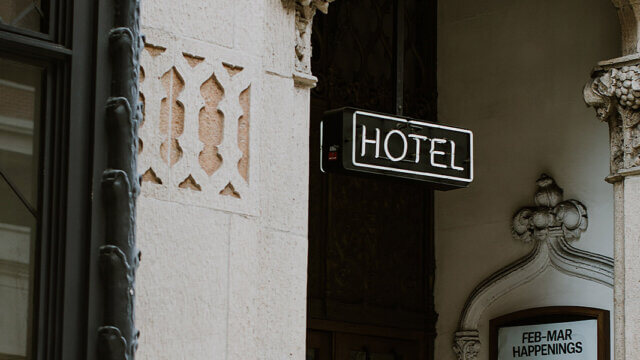NATIONAL REPORT—Top-line growth continues for U.S. hotels, but flow through isn’t keeping up, according to the latest data tracking full-service hotels from HotStats.
Despite a 1.1% year-on-year increase in RevPAR, profit per room at hotels in the U.S. dropped 2.2% this month due to declining non-rooms revenues and rising costs.
Profit per room at hotels in the U.S. dropped to $82.23 this month, almost 24% below the $101.92 GOPPAR recorded for year-to-date 2018. This was only the second month since the beginning of 2018 that year-on-year profit per room has fallen in what has been a positive period of performance.
While hotels in the U.S. successfully recorded an increase in rooms revenue, a decline was recorded in non-rooms revenues, including food & beverage (down 2.3%) and conference & banqueting (down 3.5%) on a per-available-room basis.
Despite the decline in ancillary revenues, hotels in the U.S. successfully recorded a 0.4% increase in TRevPAR to $236.65, which contributed to the 2.8% increase in total revenue for year-to-date 2018, and represented a tenth consecutive month of year-on-year growth in this measure.
However, rising costs, which included a 0.9 percentage-point increase in labor to 36.5% of total revenue, as well as a 0.4 percentage-point uplift in overheads to 24.4% of total revenue, impeded growth in total revenue.
As a result of the movement in revenue and costs, profit conversion at hotels in the U.S. slumped to 34.7% of total revenue, which is well below the year-to-date average of 38.5% of total revenue.
Profit & Loss Key Performance Indicators – U.S. (in USD)
July 2018 v July 2017
RevPAR: +1.1% to $159.63
TRevPAR: +0.4% to $236.65
Payroll: +0.9 pts to 36.5%
GOPPAR: -2.2% to $82.23
While there are some signs of a summer slump, room occupancy levels remained relatively buoyant, at 80.4%, in spite of a 0.9 percentage-point decline. The strength of demand enabled hoteliers to leverage achieved average room rate to record a 2.2% year-on-year increase to $198.47, which contributed to its ongoing upward trajectory.
In contrast to recent months, in which average room rate has been driven by the commercial segment, the growth in July was fueled by the leisure segment, which included an increase in individual leisure (up 9.2%), as well as group leisure (up 15.4%) segments, but was also supported by a 22.1% increase in rate in the corporate segment to $194.52.
“Achieved average room rate has been the mainstay for U.S. hoteliers in recent years with year-on-year growth recorded in every month since September 2017, suggesting it has been a very positive period of trading,” said Pablo Alonso, CEO of HotStats.
“However, more regularly, the growth in rate has not been sufficient to outpace a drop in room occupancy or falling ancillary revenues as well as rising costs.The performance this month provides further evidence that it is key for hotel owners, operators, and investors to look beyond RevPAR to understand the true performance of hotels.”
In line with the performance of hotels across the U.S. this month, properties in Washington, DC, also had a tough stretch as profit per room plunged by 13.9% year-on-year to $66.35, which was 63% below the year-to-date GOPPAR figure for the nation’s capital at $108.14.
This year has been an operating challenge for hotels in Washington, DC: falling top-line revenues, as well as rising costs, have meant year-on-year profit per room has now fallen by 11.8% in the seven months to July 2018.
The challenges to GOPPAR this year are in contrast to the year-on-year increases recorded in both 2016 (10.3%) and 2017 (7.9%).
While hotels in the city recorded an increase in non-rooms revenues this month, which included an uplift in food & beverage (3.1%), conference & banqueting (11.2%) and leisure (2.8%), revenue on a per-available-room basis was not enough to offset the 8% drop in rooms revenue, and, as a result, TRevPAR fell by 4.1% in July to $245.67.
In addition to falling total revenue levels, hotels in Washington, DC, continue to suffer increases in costs, illustrated by the 2.2 percentage-point lift in labor this month to 44%, which is well above the average recorded in this measure for year-to-date 2018, at 38.7% of total revenue.
Profit & Loss Key Performance Indicators – Washington, DC (in USD)
July 2018 v July 2017
RevPAR: -8% to $168.83
TrevPAR: -4.1% to $245.67
Payroll: +2.2 pts to 44.0%
GOPPAR: -13.9% to $66.35
Declining RevPAR levels at hotels in the capital have been hit by a drop in both room occupancy (down 1.3 percentage points) and average room rate (down 6.6%) for year-to-date 2018, which is symptomatic of a drop in demand, an increase in supply, or both.
“In addition to not having the benefit of major events driving top-line performance as they did in 2017, hoteliers in Washington, DC, are now starting to feel the impact of the ongoing hotel building boom, which has seen the addition of more than 3,000 rooms in recent years,” said Alonso.
In line with the movement in the U.S. overall, hotels in New Orleans suffered a 5.6% drop in profit per room in July, in spite of a 0.2 % increase in RevPAR.
While hotels in New Orleans successfully recorded a 7.7% increase in achieved average room rate to $167.14, it was almost entirely wiped out by a 5.3 percentage-point decline in room occupancy.
In addition, declining non-rooms revenues contributed to the 0.7% drop in TRevPAR in July to $176.46.
Profit & Loss Key Performance Indicators – New Orleans (in USD)
July 2018 v July 2017
RevPAR: +0.2% to $118.77
TrevPAR: -0.7% to $176.46
Payroll: +0.7 pts to 34.3%
GOPPAR: -5.6% to $56.96
Falling revenue levels were further hit by a 0.7 percentage-point increase in labor costs to 34.3% of total revenue.
At $56.96, this was the lowest GOPPAR level recorded at hotels in New Orleans so far in 2018 and equivalent to a profit conversion of just 32.3% of total revenue, which is well below the year-to-date average of 45.4%.

